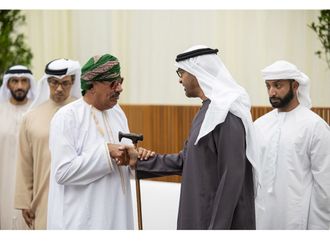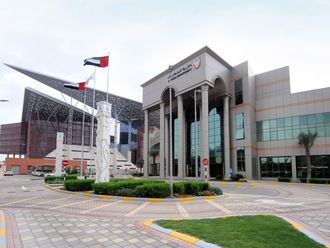Two British scientists have recently completed a study on the UAE crabs to gather reference for archaeological survey on the marine life.
Dr Peter Hogarth, a marine biologist from the Department of Biology at the University of York in the UK, and Dr Mark Beech, of the Abu Dhabi Islands Archaeological Survey (ADIAS) and a Research Fellow in the Department of Archaeology at the University of York, have been systematically recording and collecting the crab species found along the coastline of the UAE.
The purpose of this study is to compile a reference collection in order to identify archaeological crab remains, recovered from a number of archaeological excavations in the Emirates.
The crab reference collection resulting from this study will be retained in future within the Marine Environment Research Centre, which is part of the Environmental Research and Wildlife Development Agency in Abu Dhabi.
An important part of Hogarth and Beech's work is a baseline study which maps the occurrence of modern day crab species along the UAE coastline.
One of the interesting outcomes of their work is the first authenticated record in the Arabian Gulf of the crab species scylla serrata, or mangrove crab. Although the presence of mangrove crabs has been suspected from observation of burrows, or from anecdotal evidence, no firm records existed until recently, when a single specimen was reported from Ras Al Khaimah, caught in a mangrove lagoon.
A note on this has recently been published by Hogarth and Beech in the locally produced publication, Tribulus, the journal of the Emirates Natural History Group.
The mangrove crab is the largest of the swimming crabs (family-Portunidae), reaching a carapace breadth of 22-23 cm and a weight of 1.5-2.0 kg.
It is widespread in the Indian Ocean and western Pacific, and in many areas is an important food species either trapped or reared in aqua-culture systems. This species is strongly associated with mangroves, where it spends much of its life cycle, excavating burrows in the soil from which it emerges to forage.
Remains of mangrove crab have been recognised at several archaeological sites in the Emirates including the Iron Age site of Rafaq in the Wadi Al Qawr, and in Sasanian and Islamic levels at Kush in Shimal, Ras Al Khaimah.
The strong association of this particular crab species with mangroves indicates that human population was dependent on mangroves, and was already exploiting them for food and other resources like fuel and timber, as long as 3,000 years ago.
Why should a species, once abundant enough to be a significant food source, have largely vanished from the Arabian Gulf? The most probable explanation in this case is the loss of the mangrove habitat. In the past mangroves were much more widespread in the Gulf.
Their use as timber for architecture and boat-building, as well as for fuel, has severely depleted mangroves in the Gulf, reducing them in area and diversity to relatively small patches, almost exclusively of the Grey mangrove, Avicennia Marina.
"We are grateful to ERWDA and to ADIAS for the support they have given to our research," Beech said.
He explained: "Through building up a reference collection about the crabs to be found today in the UAE, it will be possible to add substantially to existing knowledge of the UAE's marine fauna. At the same time, by comparing present distributions with evidence from the past, through the remains of crab species found on archaeological sites throughout the country, useful information can be obtained on patterns of historical exploitation and the impact of man on the country's wildlife over the last few thousand years.
Hogarth and Beech will present the results of their research at an international conference in Durham, UK, in August.
British scientists complete study on crabs
Two British scientists have recently completed a study on the UAE crabs to gather reference for archaeological survey on the marine life.












